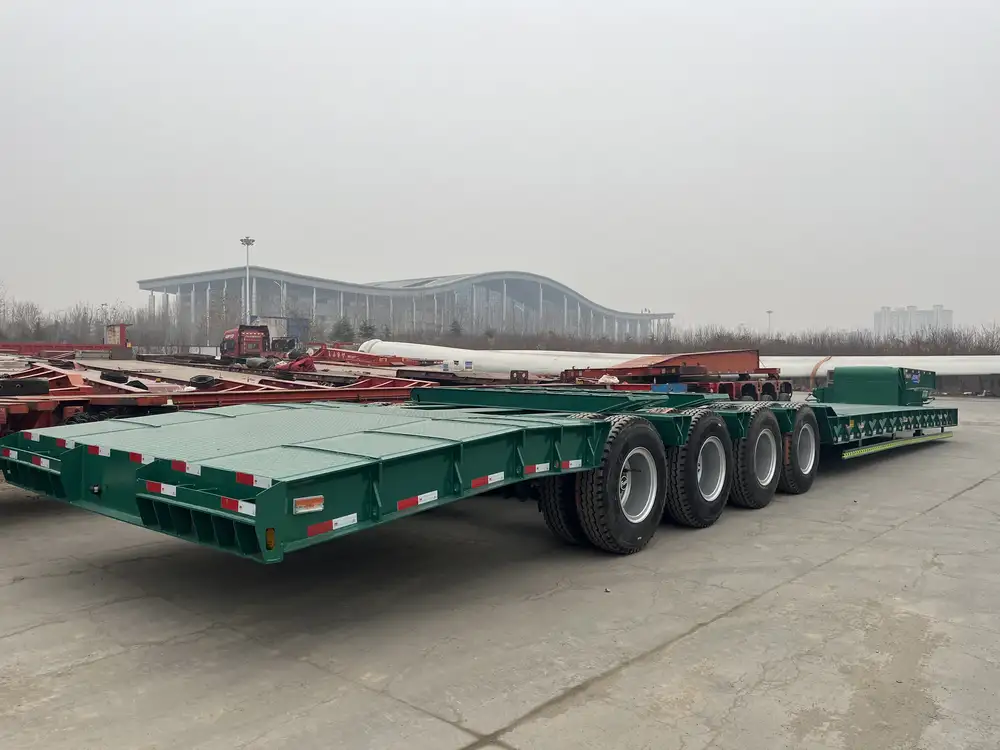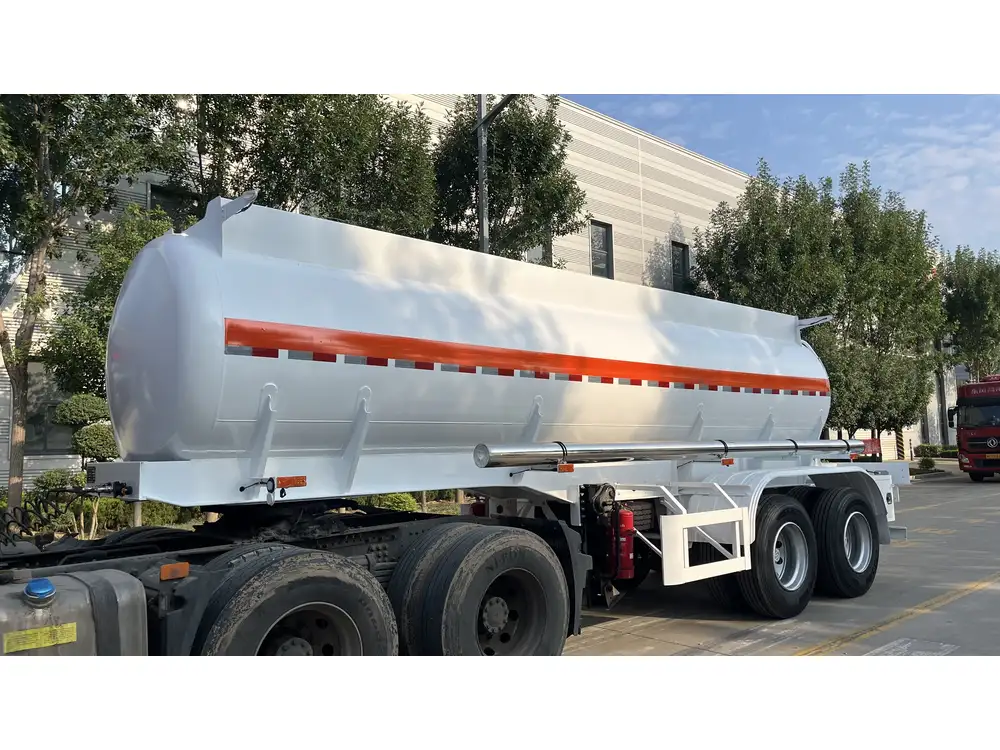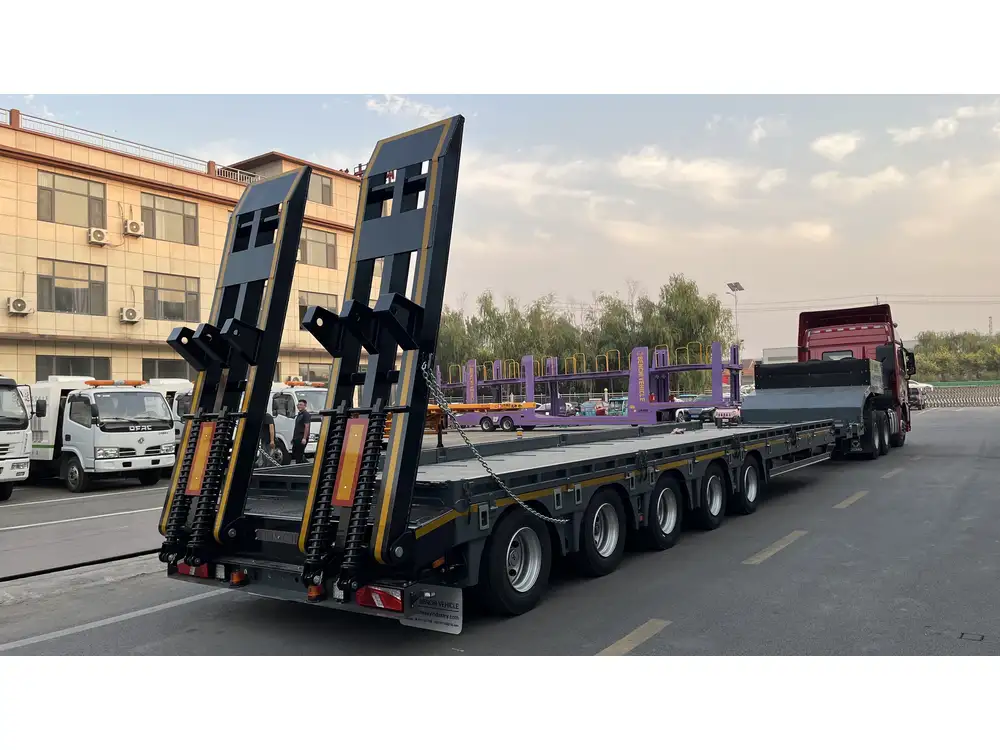Converting a flatbed trailer into an enclosed trailer is an innovative way to maximize the utility of your existing equipment, improve cargo security, and protect goods from weather elements. This article will provide an in-depth, step-by-step guide to help you execute this conversion effectively, while considering various factors such as materials, designs, costs, and safety measures.
Understanding the Benefits of Enclosed Trailers
Before we delve into the conversion process, it’s essential to understand why switching to an enclosed trailer is advantageous:
| Benefit | Description |
|---|---|
| Increased Security | Enclosed trailers provide better protection against theft. |
| Weather Protection | Shield your cargo from rain, snow, and harsh sunlight. |
| Enhanced Aerodynamics | Improve fuel efficiency through better aerodynamics. |
| Organized Storage | Allows for a more organized cargo space with shelving. |
| Versatility | Suitable for various uses including transport, storage, etc. |
Step-by-Step Conversion Process

Step 1: Gather Necessary Materials
To start the conversion, it is crucial to gather the necessary materials and tools. Below is a table listing essential items required in the process:
| Materials | Quantity Needed |
|---|---|
| Plywood for walls and ceiling | Amount varies depending on trailer size |
| Aluminum or steel for frame structure | Enough to construct the outer frame of the trailer |
| Hinges for doors | At least 4 per access door |
| Weather stripping for sealing | Length sufficient to cover gaps around doors |
| Screws, nails, and bolts | Multiple sizes for assembly |
| Paint or protective sealant | To finish the exterior and protect the materials |
| Insulation (optional) | For maintaining temperature inside if transporting sensitive items |
| Lighting fixtures | Depending on your needs for interior visibility |
This initial preparation sets the stage for a seamless conversion process.
Step 2: Measure and Plan
Before making any cuts or purchases, thorough measurement is essential. Use a tape measure to gather the following dimensions:
- Width of the flatbed trailer
- Length of the flatbed trailer
- Height of the desired enclosed trailer
Create a blueprint that outlines where the walls, doors, and potential windows will be placed. This plan should also include structural reinforcements needed for safety and durability.
Step 3: Construct the Frame
- Cut the Frame Material: Based on your measurements, cut the aluminum or steel to create a frame that fits within the dimensions of the flatbed trailer.
- Assemble the Frame: Use bolts and brackets to secure your frame together. It’s essential to ensure that corners are aligned, and the frame is level to make the rest of the construction easier.
- Attach the Frame to the Flatbed: Secure the frame directly onto the flatbed trailer using heavy-duty bolts. This ensures that the structure is stable and can support the walls.

Step 4: Install the Walls
- Cut Plywood: Based on your blueprints, cut the plywood sheets to the correct size for each wall.
- Attach Walls: Begin with one wall and attach it to the frame using screws. Repeat for the remaining walls.
- Seal Edges: Once walls are secured, use weather stripping or caulk along the seams to ensure no gaps exist where air or moisture can seep through.
Step 5: Roof Installation
- Measure and Cut Roof Panels: The plywood for the roof should be cut to fit snugly on top of the walls.
- Install Roof Panels: Securely attach the roof panels to the frame using screws. Ensure that joints are also sealed to prevent leaks.
- Add Insulation (Optional): If the trailer is intended for transporting sensitive items, inserting insulation between the roof panel and the frame is advisable.
Step 6: Design the Entry
- Determine Door Placement: Choose where you want your doors. Common placements are on the side or back of the trailer.
- Cut Doors: Using the same plywood, square-cut the doors to your desired height and width, usually about 6 feet high by 4 feet wide for easy access.
- Install Hinges: Attach the hinges to the door and frame, making sure they are sturdy enough to withstand repeated use.

Step 7: Provide Lighting and Ventilation
Lighting
- Install interior lighting fixtures, wires, and switches to ensure the space is usable at night or low-light conditions.
Ventilation
- Cut ventilation holes and install vents or windows to allow air circulation within the trailer. This step is crucial to prevent mold and odors, particularly if transporting perishables.

Step 8: Painting and Finishing Touches
- Prepare for Painting: Sand down the plywood and ensure the surface is dust-free.
- Apply Paint or Sealant: Choose a weather-resistant paint or sealant for the exterior. This helps protect against rust and UV damage.
- Finishing Details: Add reflective tape or other safety markers to the exterior for visibility, especially if the trailer is used during nighttime.
Step 9: Safety Features
Braking System & Lighting
Ensure your trailer complies with local regulations regarding brakes and lighting.
- Install brake lights and turn signals if the trailer is towed on public roads.
- Regularly inspect the braking system for functionality before use.

Troubleshooting Common Issues
It’s not uncommon to face challenges during this conversion. Here are some potential issues and their remedies:
| Common Issue | Possible Solution |
|---|---|
| Uneven Walls | Double-check measurements and ensure the frame is level. |
| Leaks | Reapply weather stripping and verify seals on doors and edges. |
| Insufficient Lighting | Evaluate wattage and consider adding more fixtures. |
| Temperature Control Problems | Enhance insulation or install more vents. |
Conclusion
Converting a flatbed trailer to an enclosed trailer can seem like an overwhelming task, but with careful planning, appropriate materials, and a thorough step-by-step approach, you can create a functional and secure space for your needs. Not only does this conversion provide an opportunity for enhanced protection of your cargo, but it also allows for a significant level of customization based on your specific requirements.
Carry out regular maintenance checks after the conversion to ensure everything functions smoothly and safely. Ultimately, this investment will prove beneficial in optimizing your transportation operations, enhancing flexibility, and expanding the potential for business growth.
Additional Resources
Consider seeking guidance from online forums, local workshops, or dedicated trailer conversion groups to gain insights and advice from experienced individuals who have undertaken similar projects. With the right knowledge and tools, your converted trailer can serve you well for many years to come.
By implementing the detailed steps outlined above and following the necessary precautions, converting your flatbed trailer into an enclosed trailer will not only be a worthy endeavor but an enlightening journey that enhances your skills and expands your operational capabilities!



